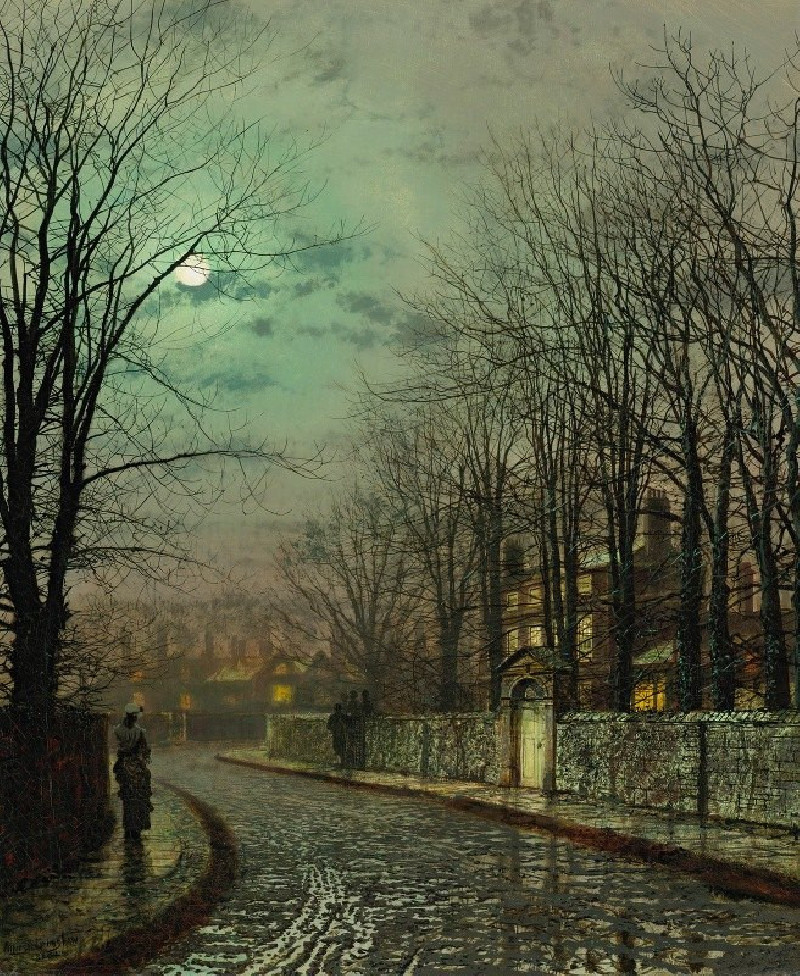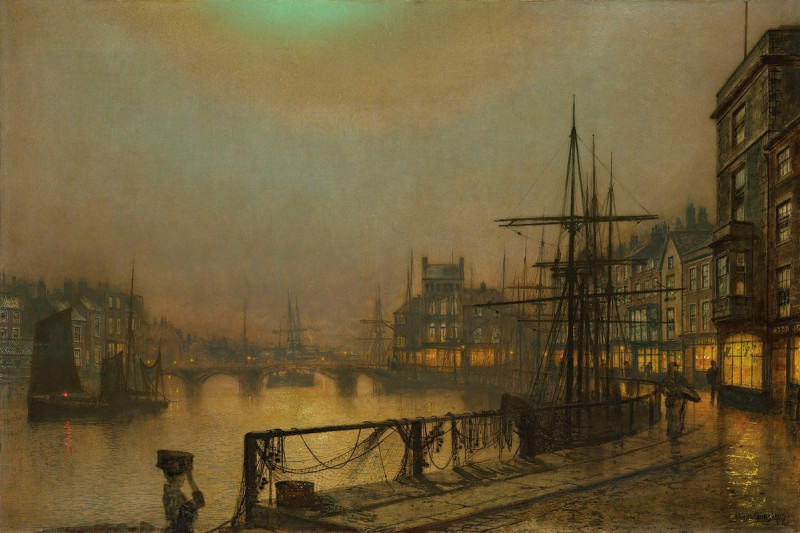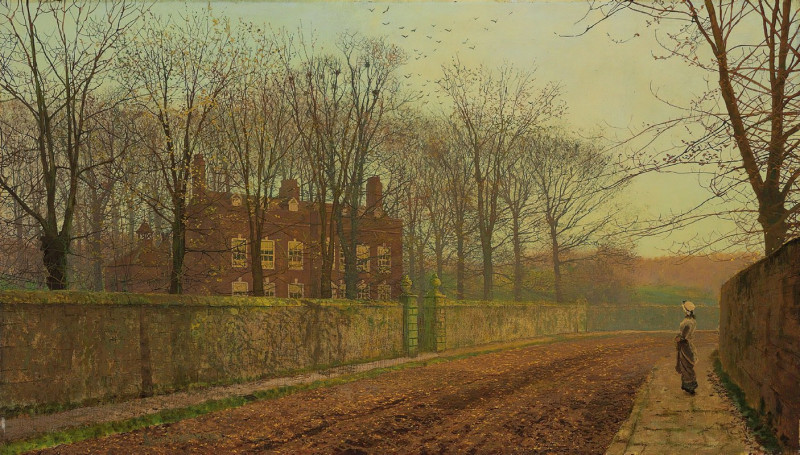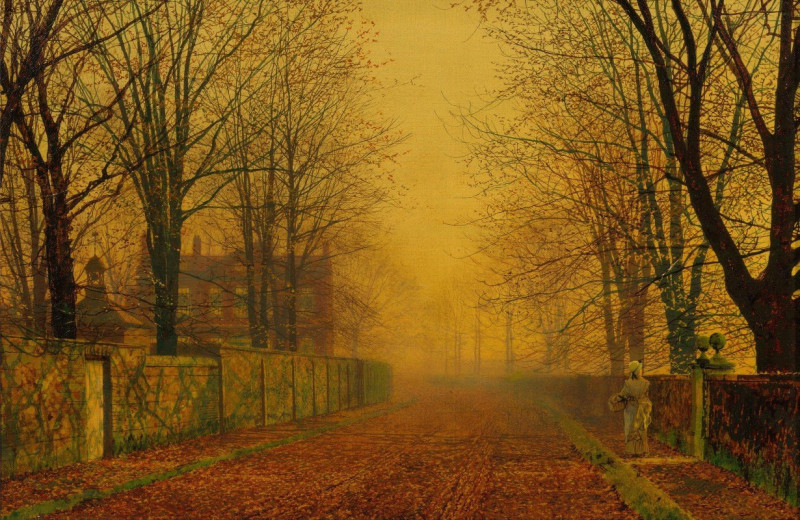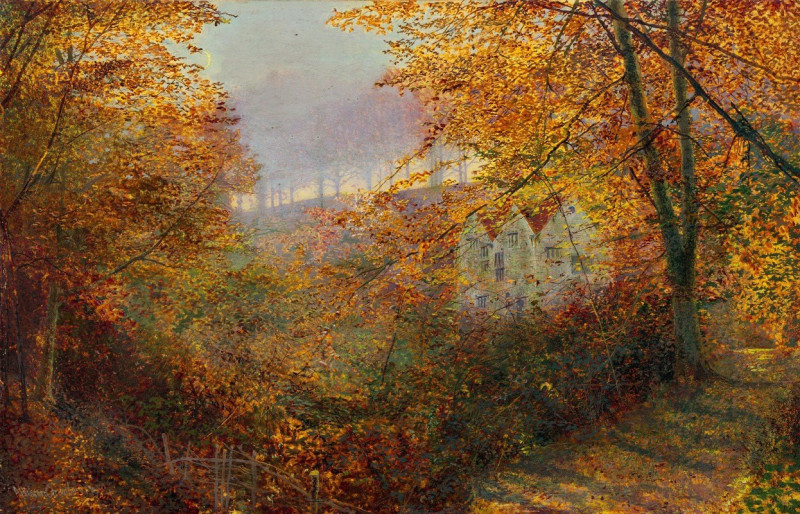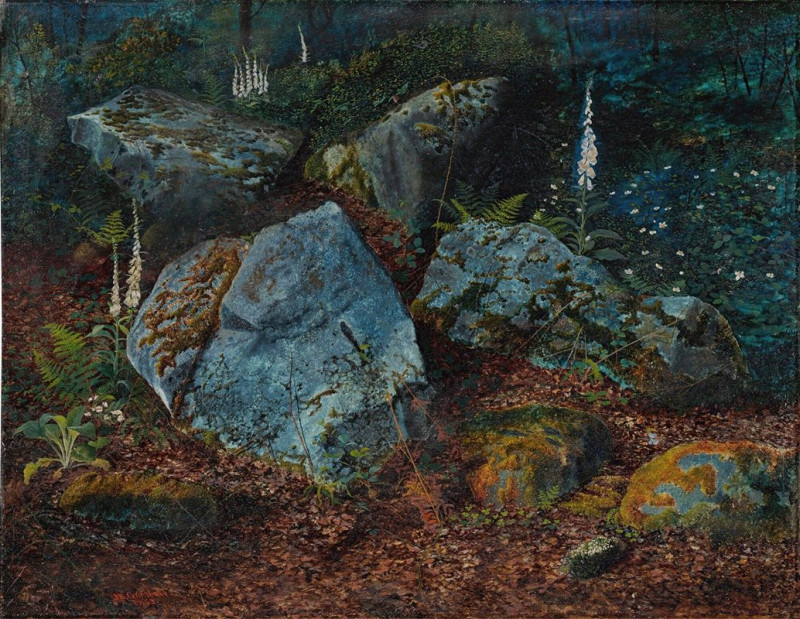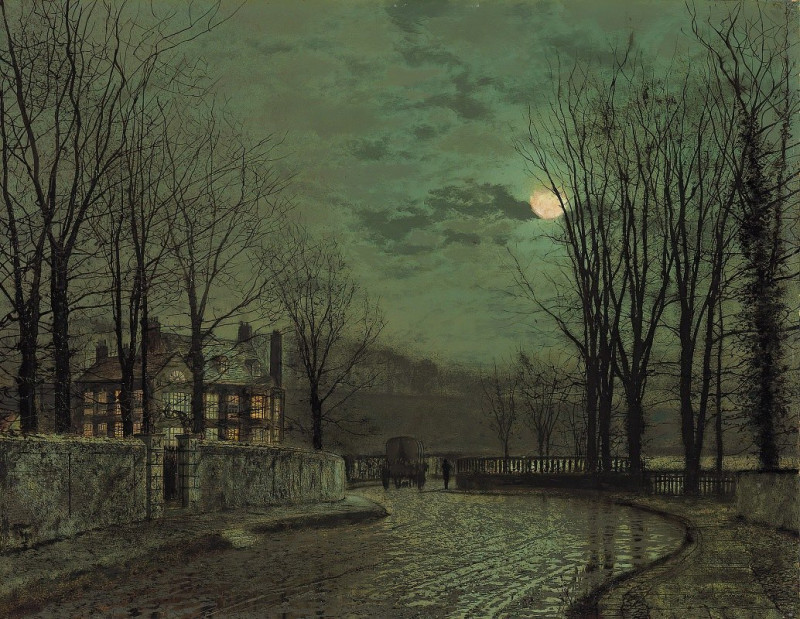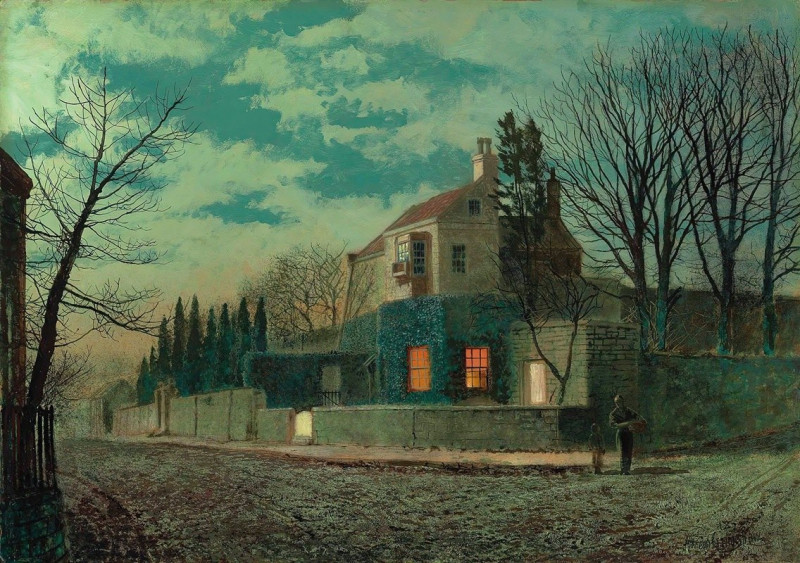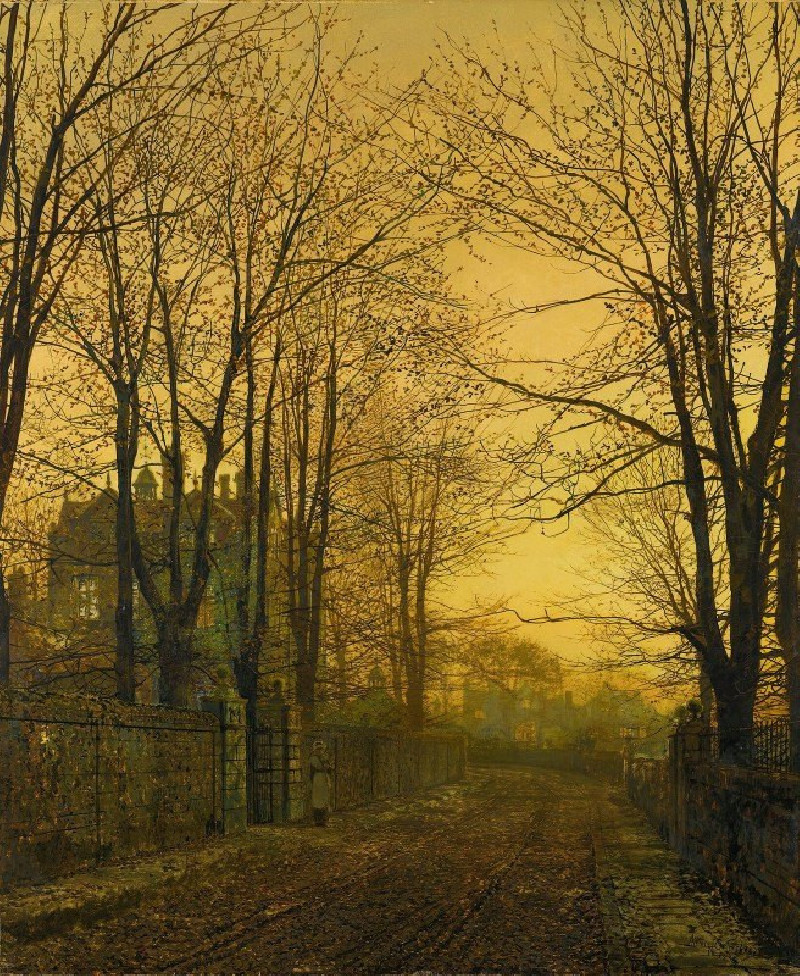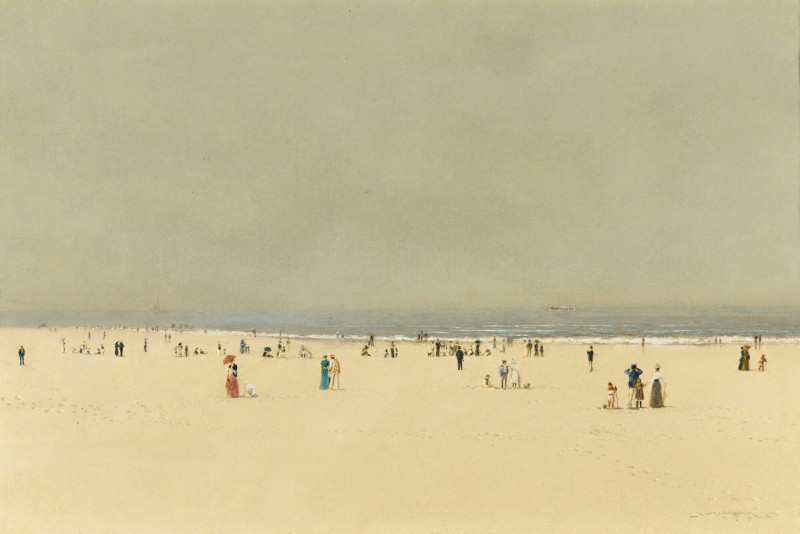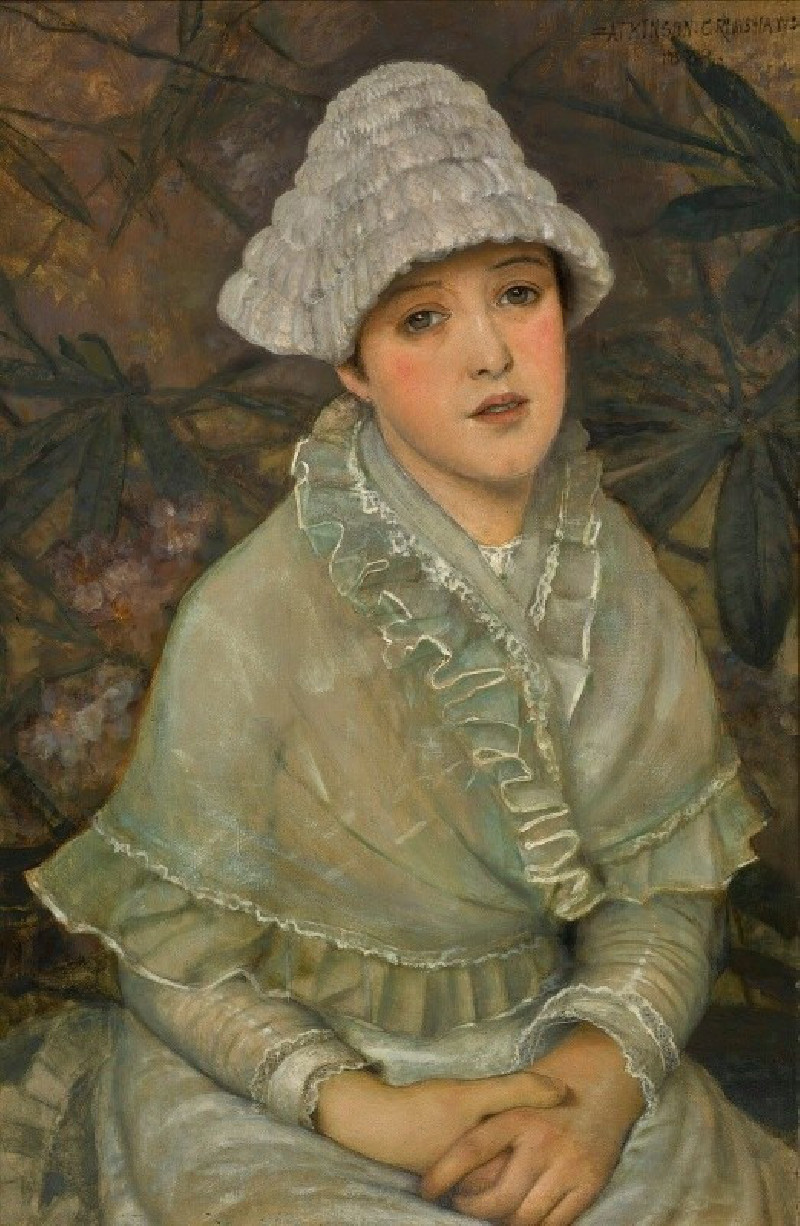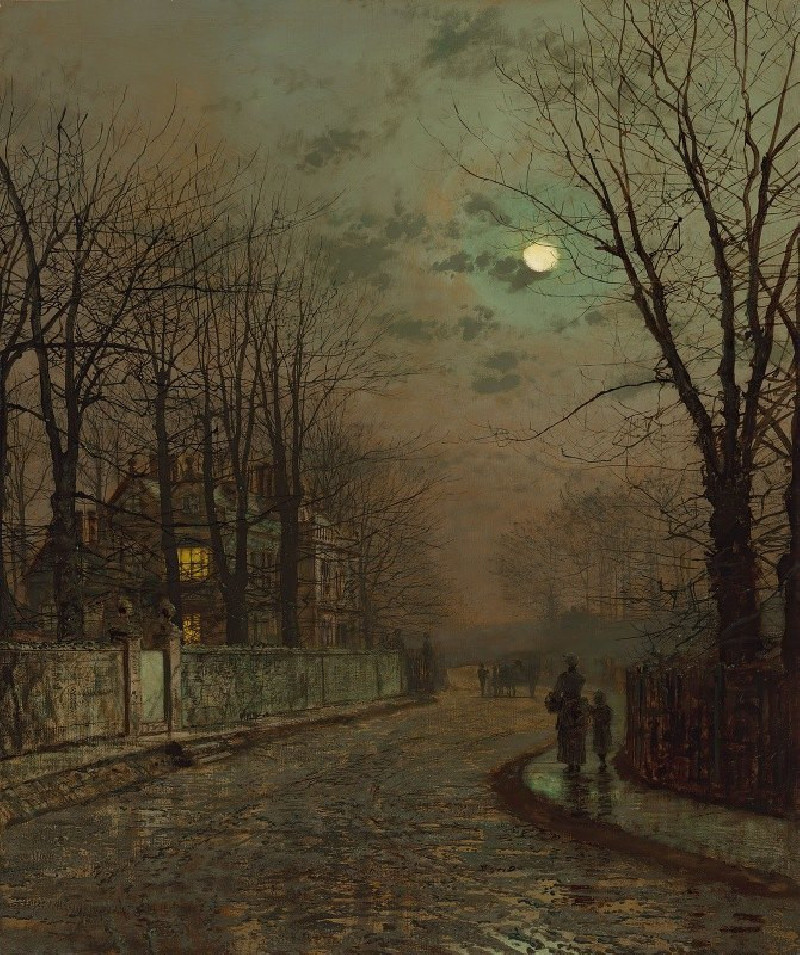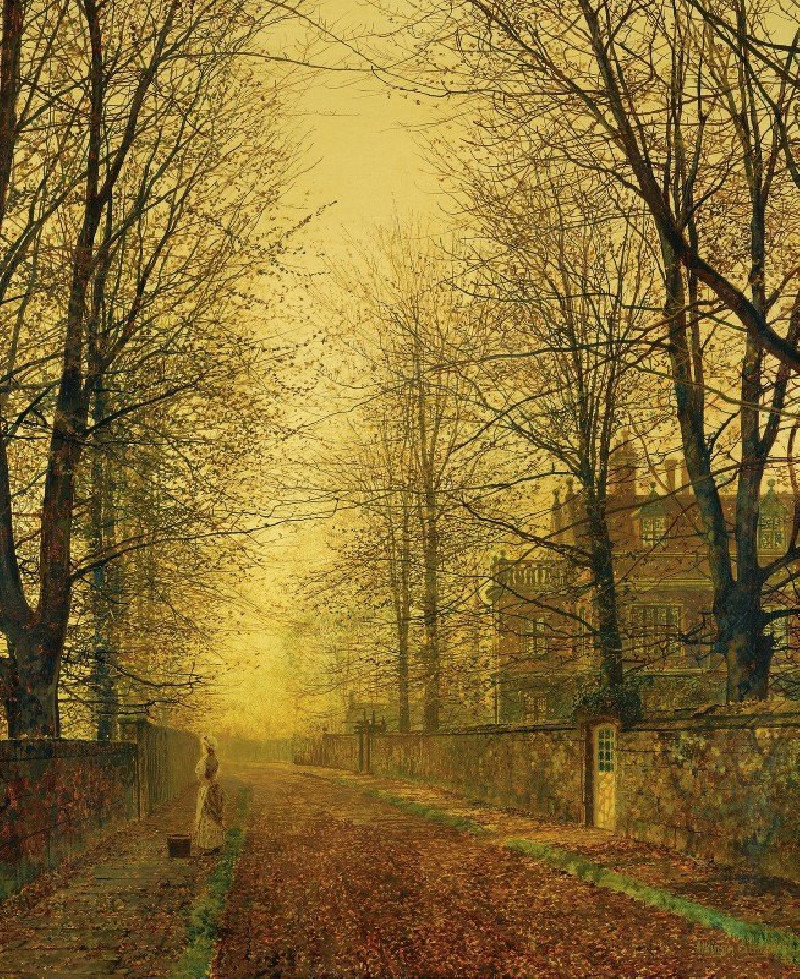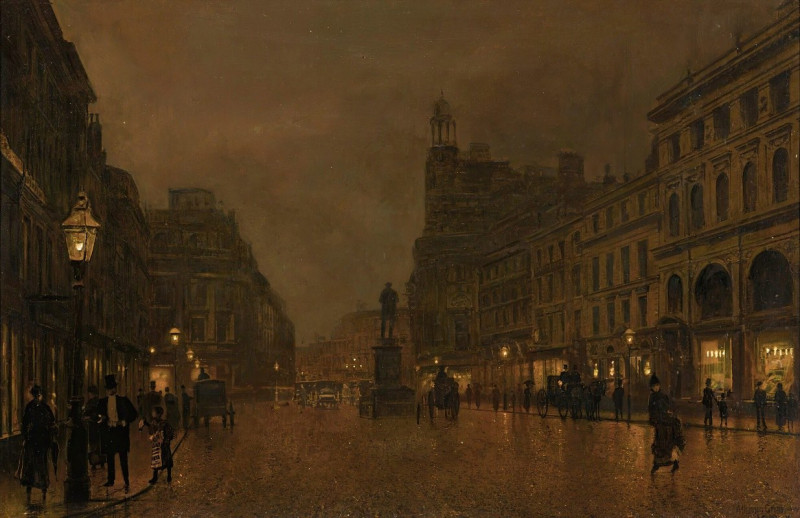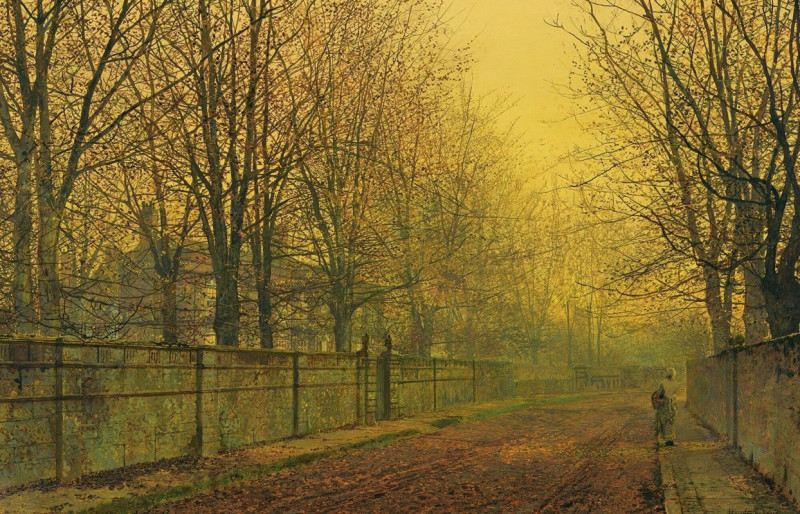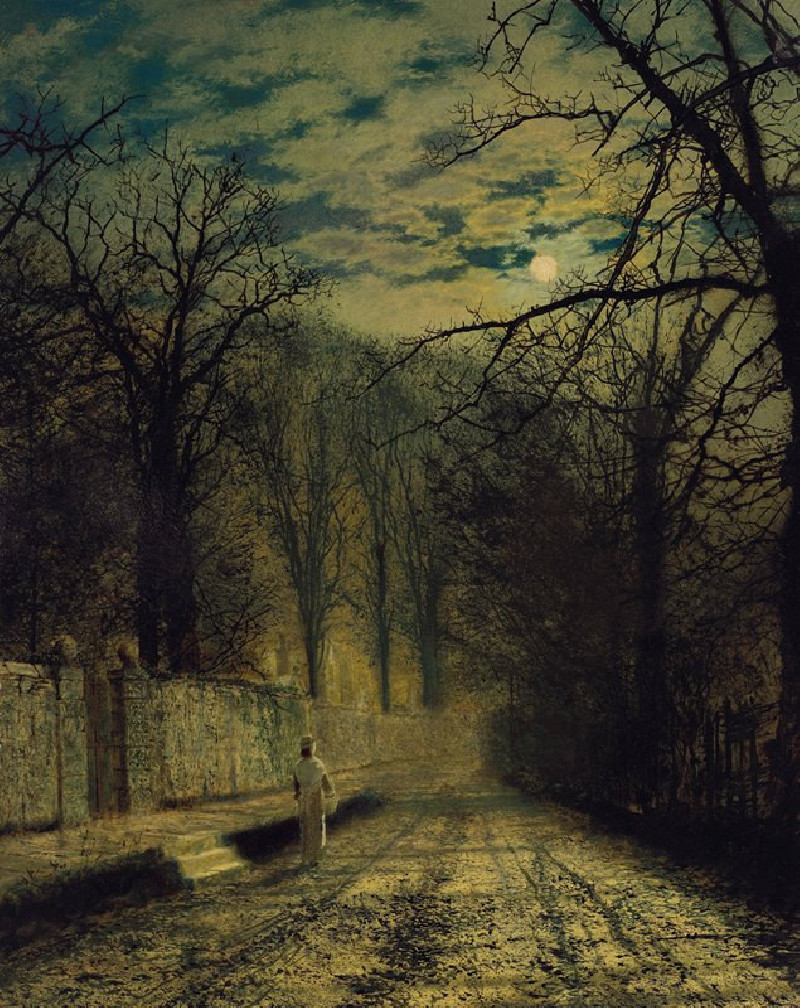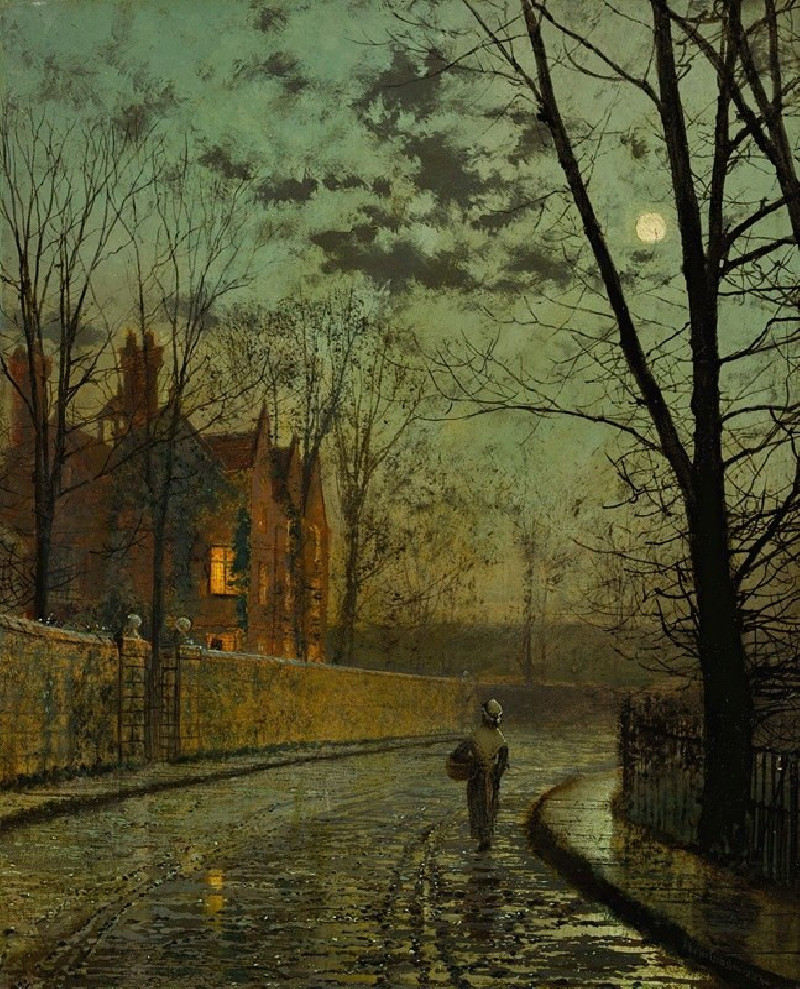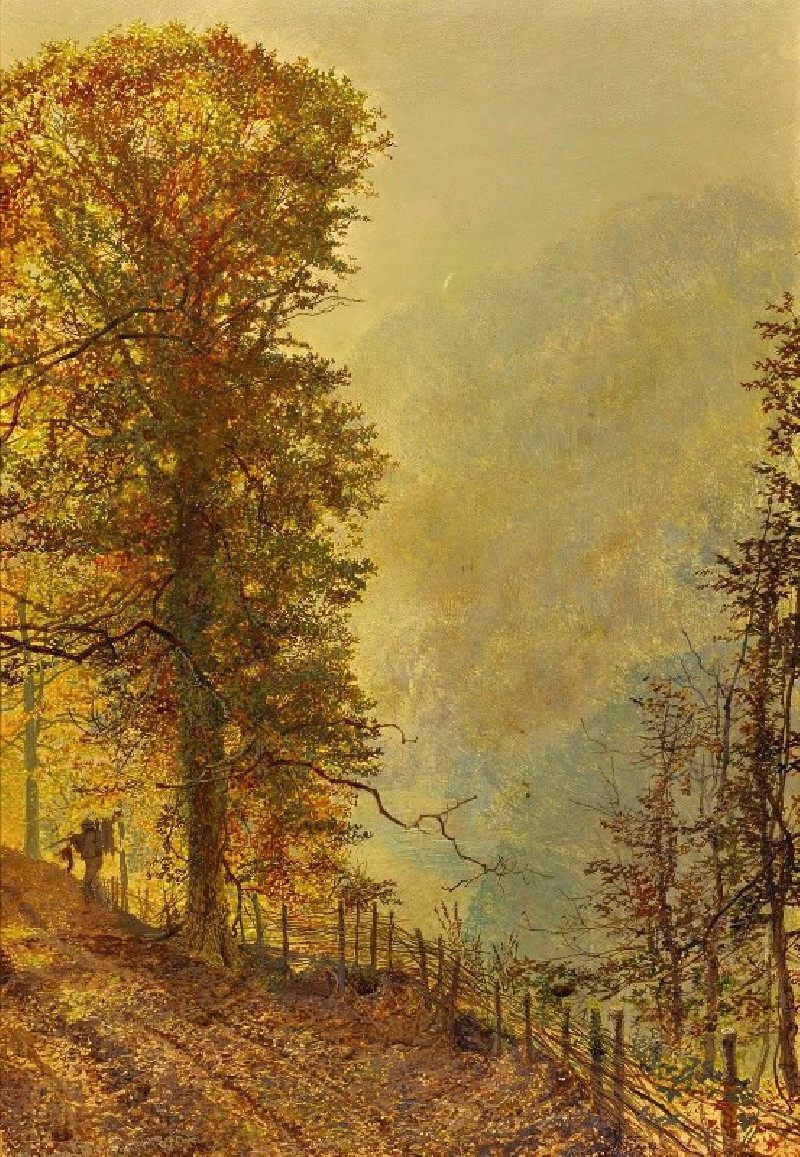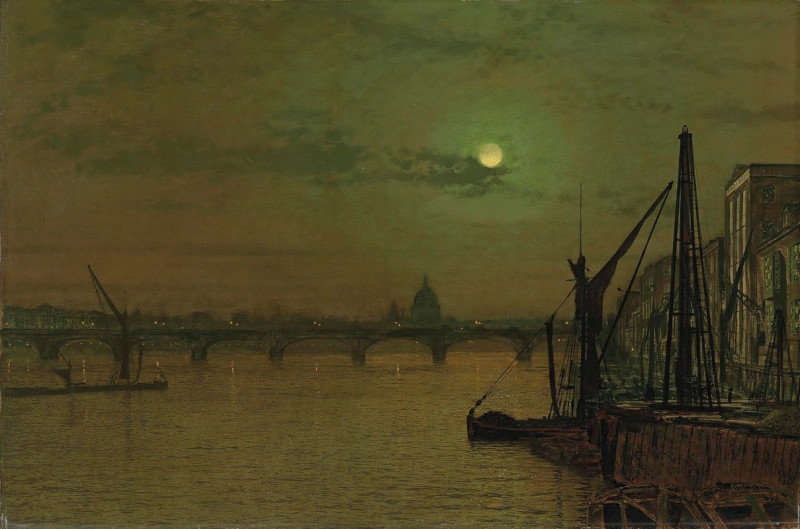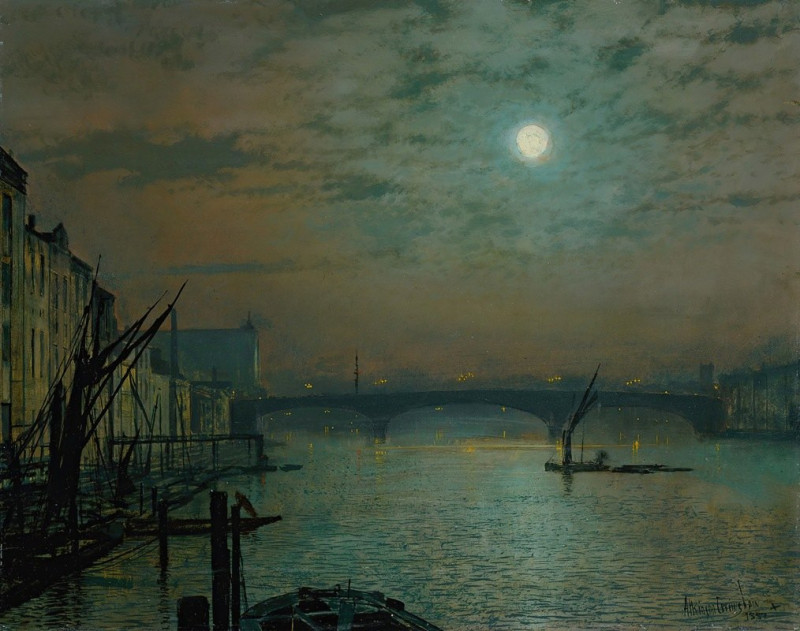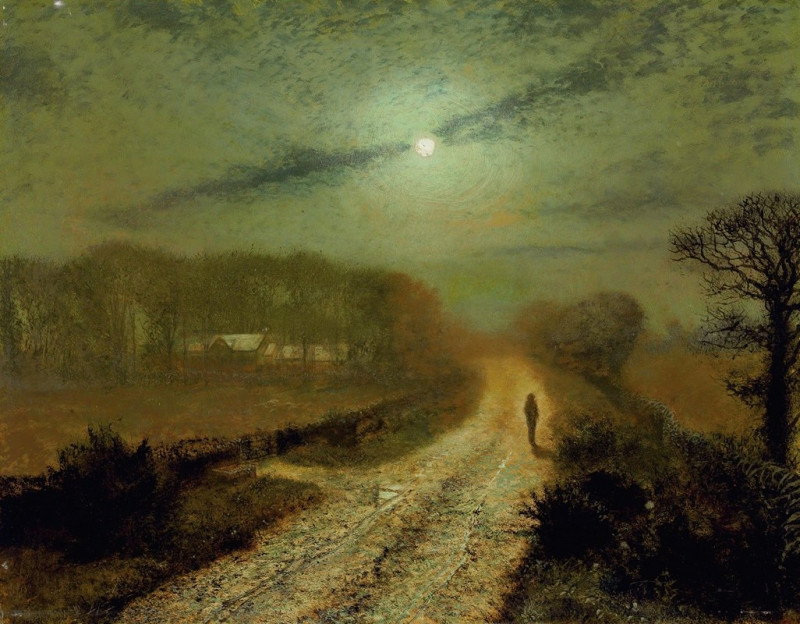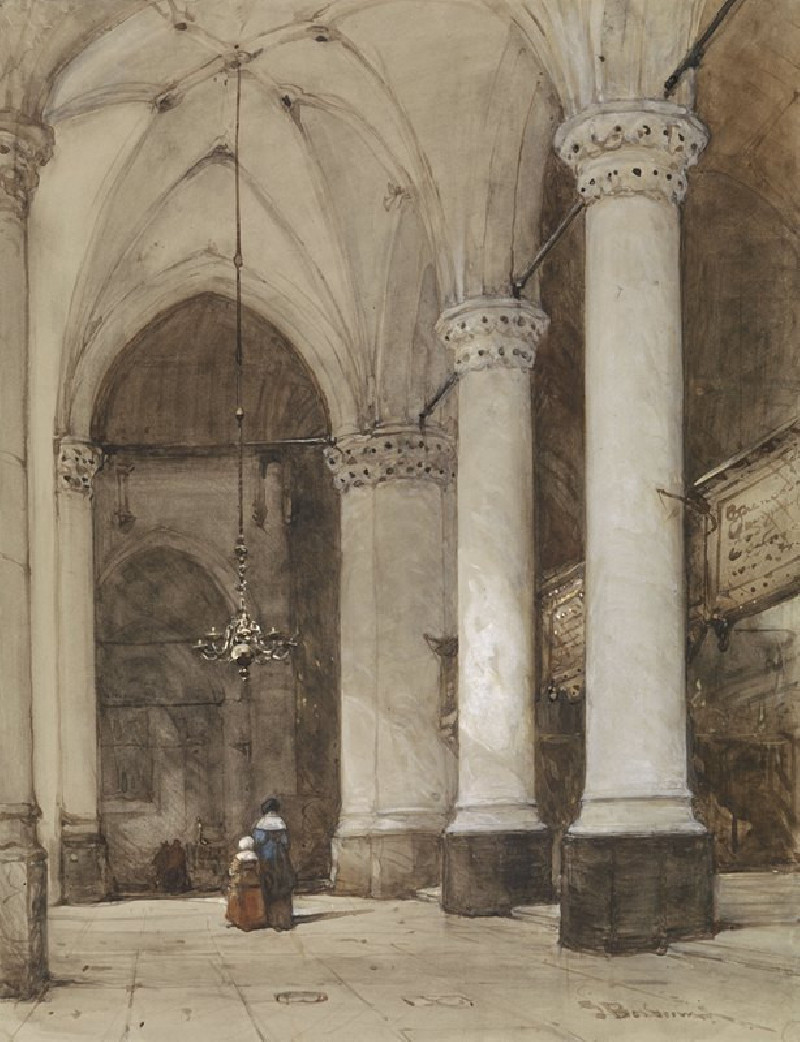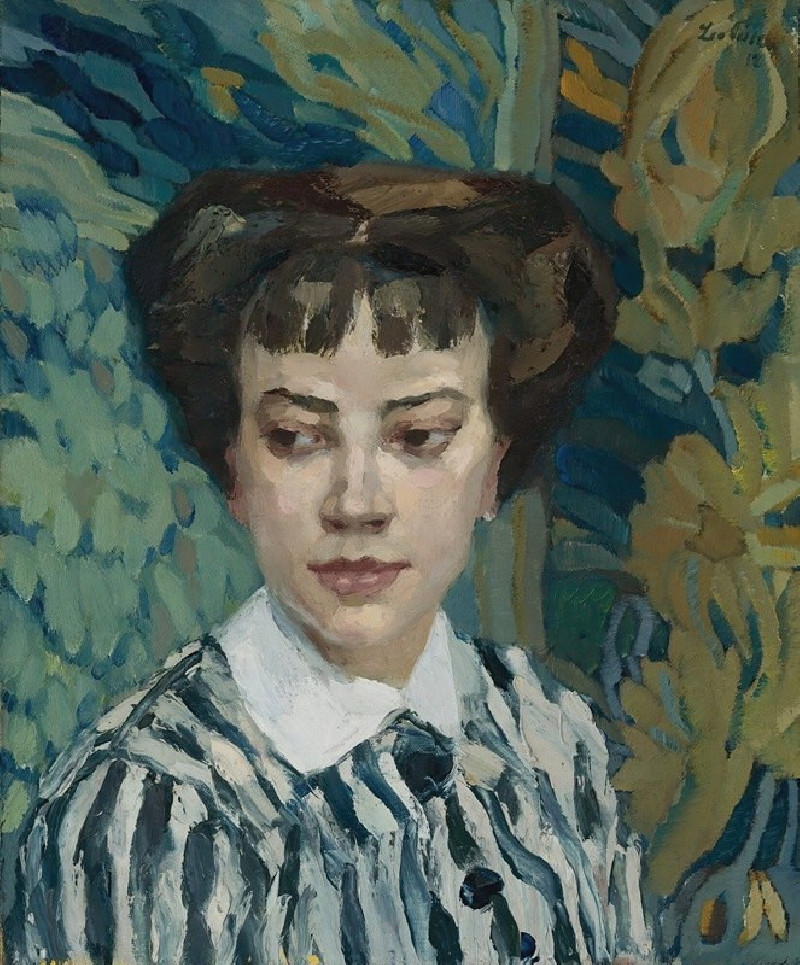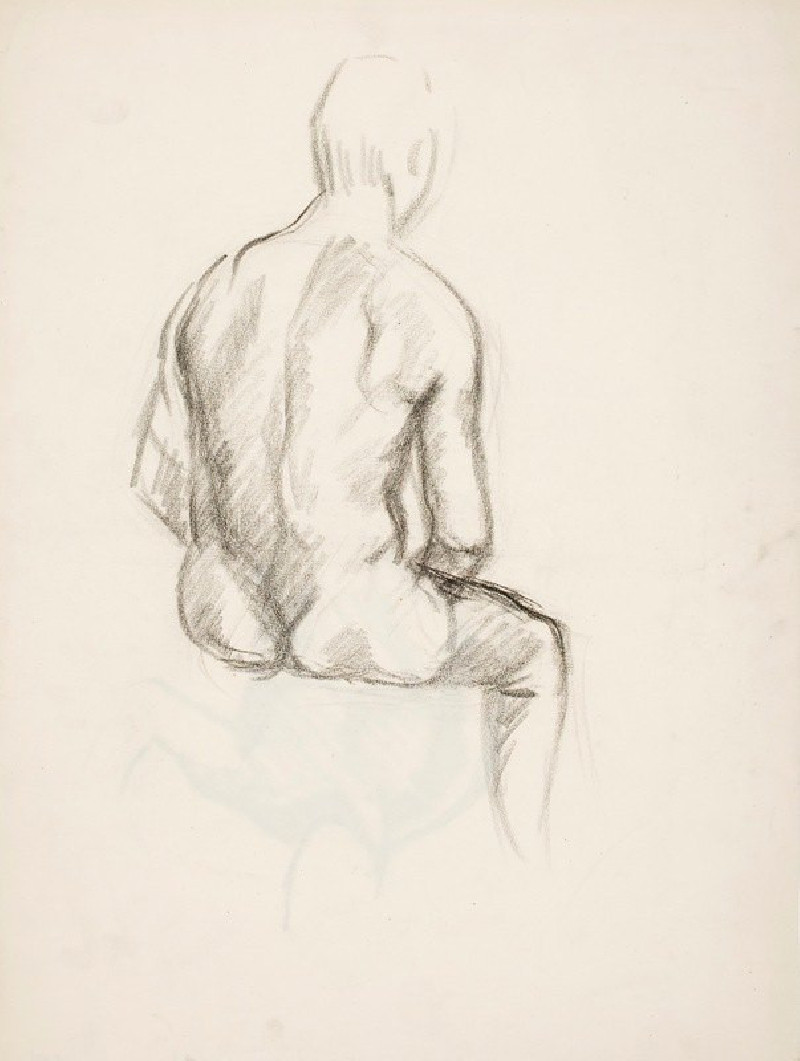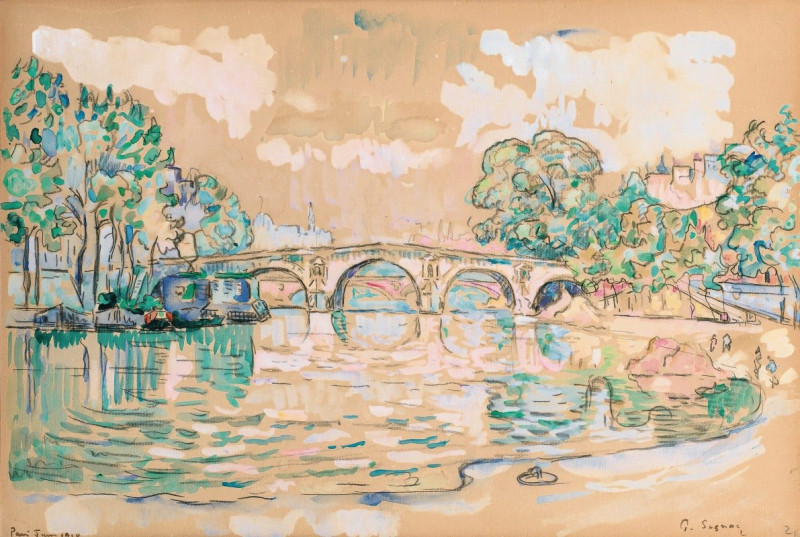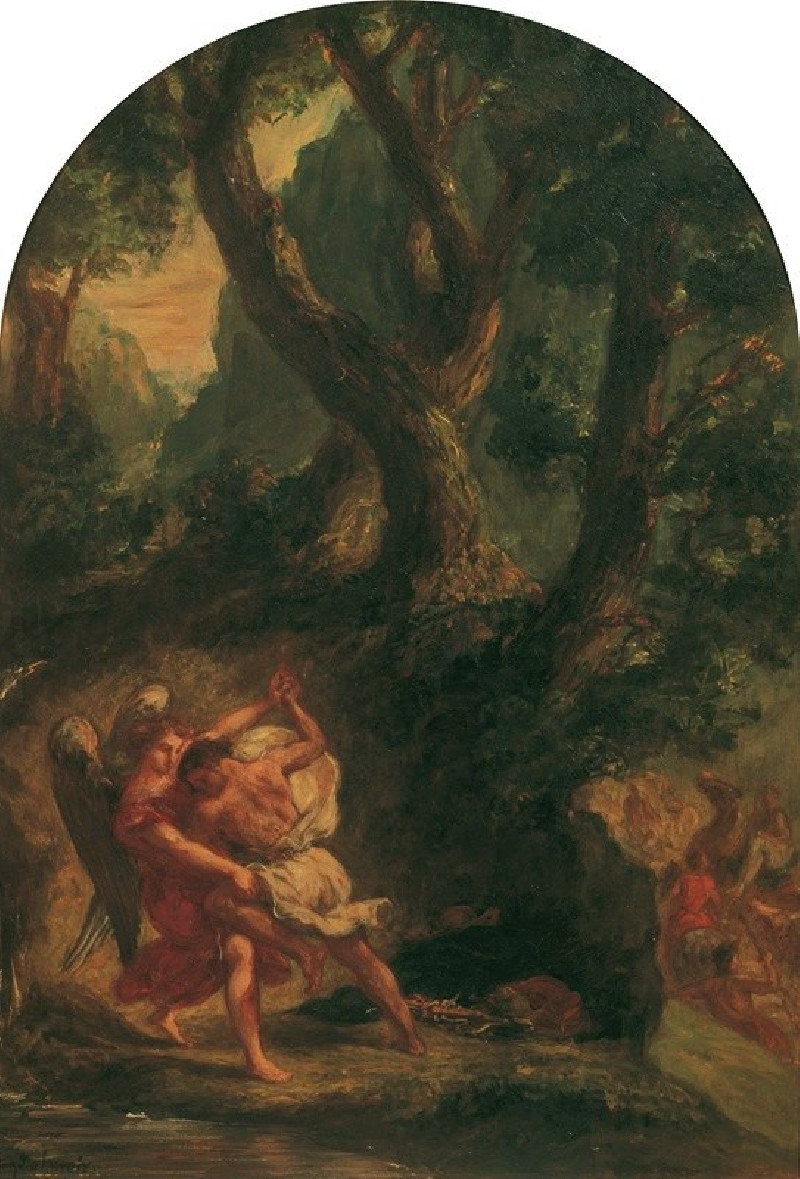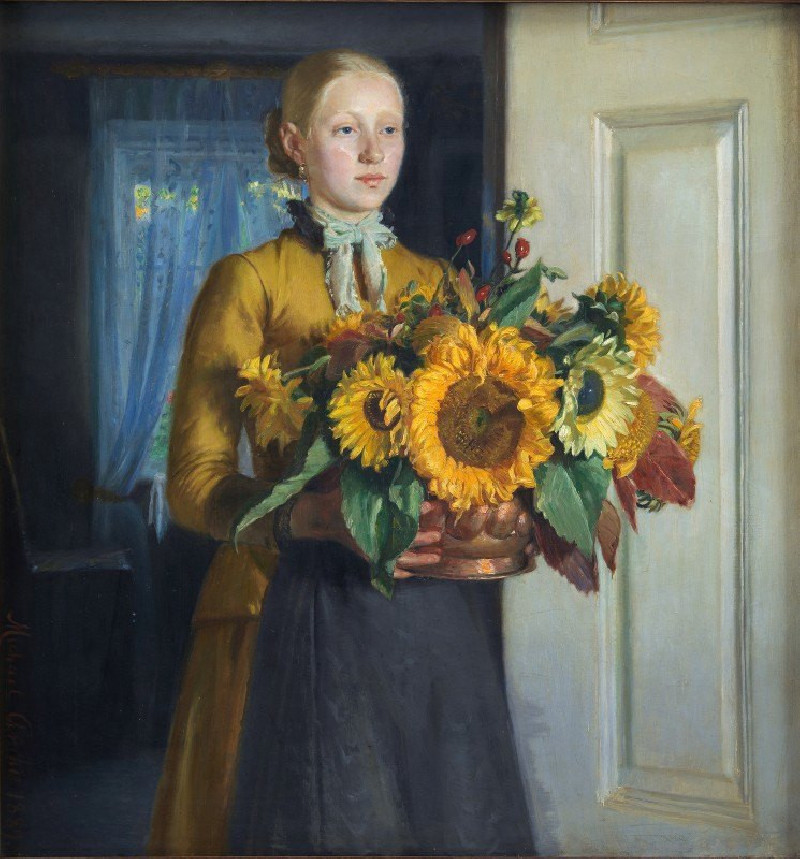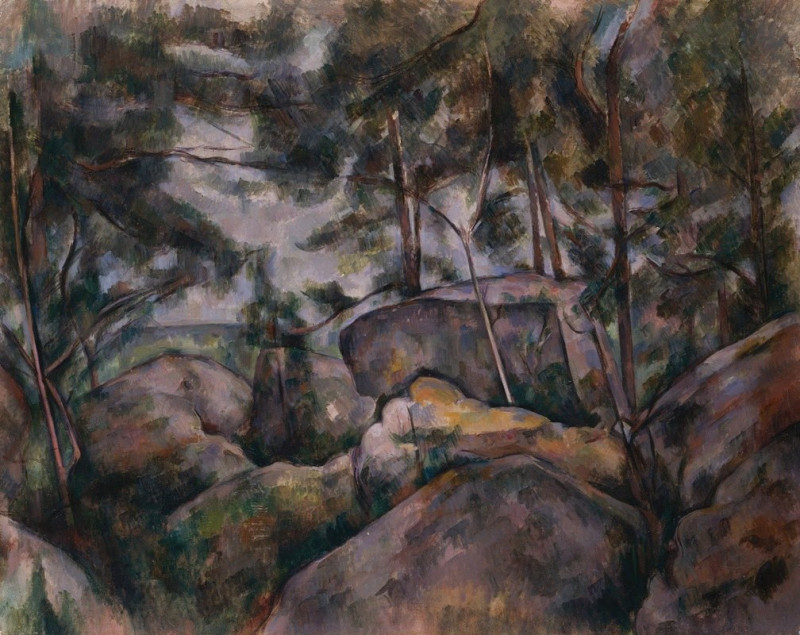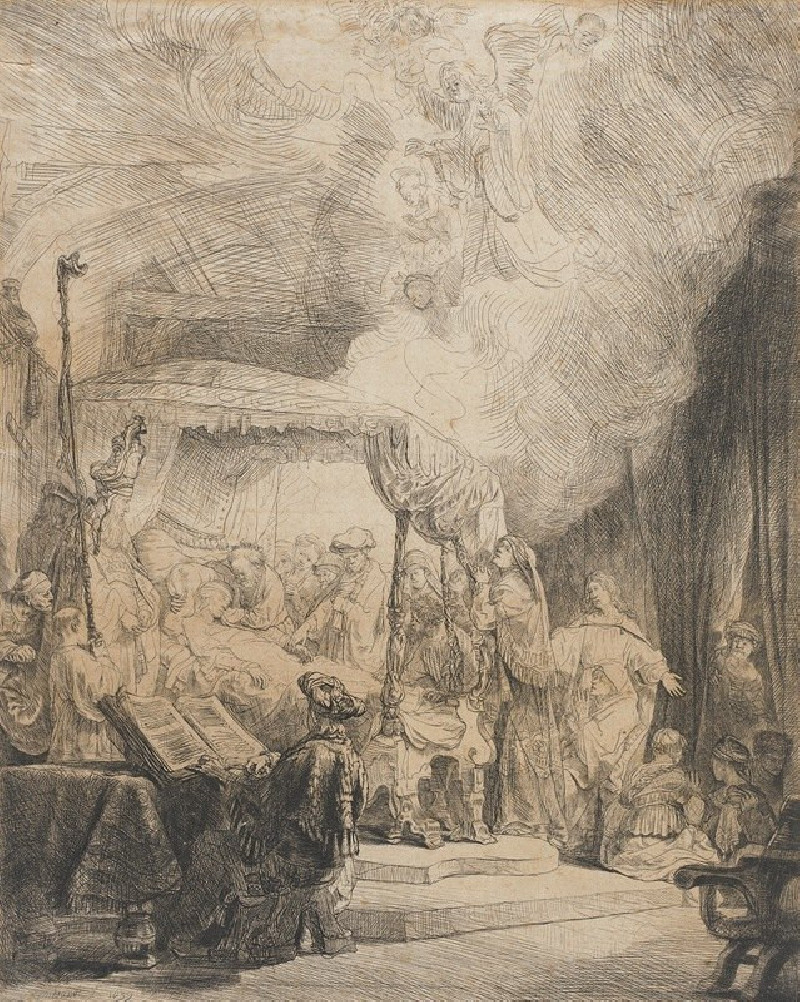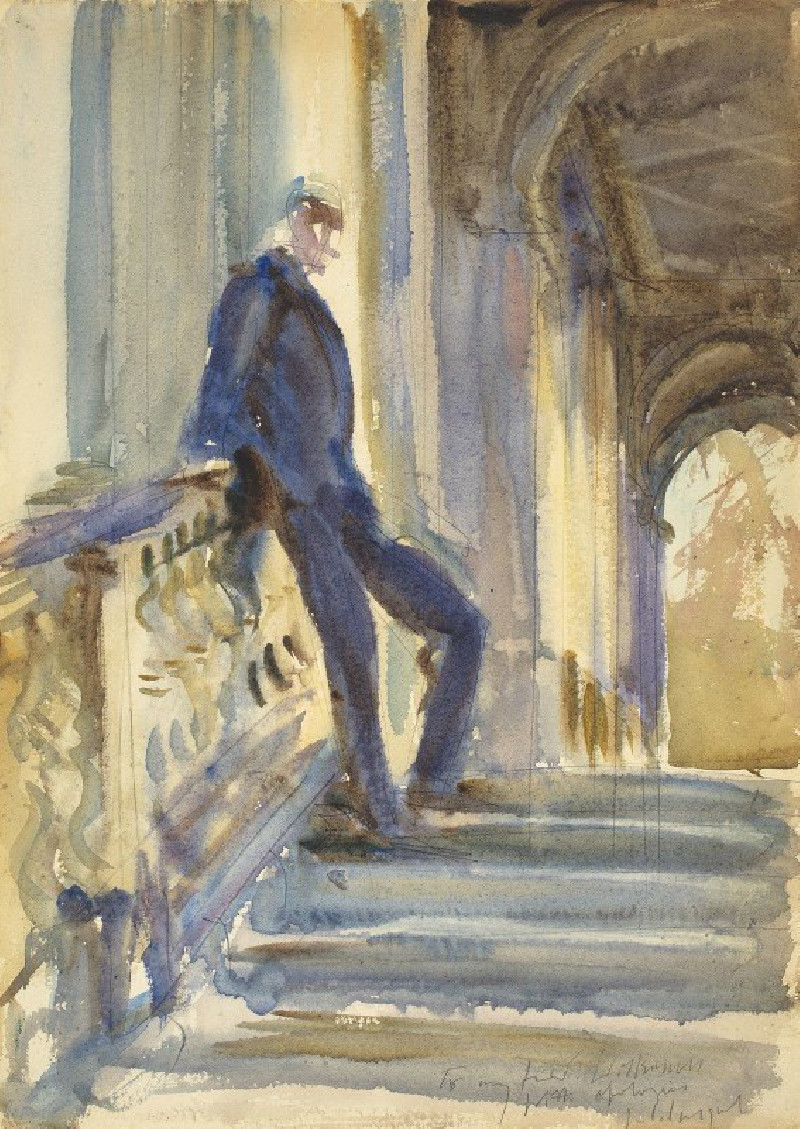The Tryst (1886)
Technique: Giclée quality print
Recommended by our customers
More about this artwork
John Atkinson Grimshaw's painting "The Tryst" (1886) masterfully captures the somber and atmospheric mood typical of his works. This renowned piece exhibits a moonlit scene on a damp, cobblestoned street that gently reflects the faint moonlight.In the foreground of the painting, two figures stand apart yet are drawn together by an undefined narrative, each silhouetted against the soft glow of the street lamps. Their distance suggests a story of anticipation or hesitation, which adds a layer of intrigue and emotion to the scene.On the right, a high wall and iron gate shield what seems to be a stately home, shrouded partially by the bare, twisting limbs of wintertime trees that line the otherwise deserted lane. The subtle illumination of windows in the far background suggests life beyond the quiet street, casting light on the mist that lingers in the air."The Tryst" is emblematic of Grimshaw’s talent for blending elements of realism with the ethereal qualities of light and shade, rendering scenes that evoke a sense of nostalgia and romanticism with an undercurrent of mystery.
Delivery
Returns
John Atkinson Grimshaw was an English Victorian-era artist best known for his nocturnal scenes of urban landscapes. Today, he is considered one of the great painters of the Victorian era, as well as one of the best and most accomplished nightscape and townscape artists of all time. He was called a "remarkable and imaginative painter" by the critic and historian Christopher Wood in Victorian Painting (1999).

